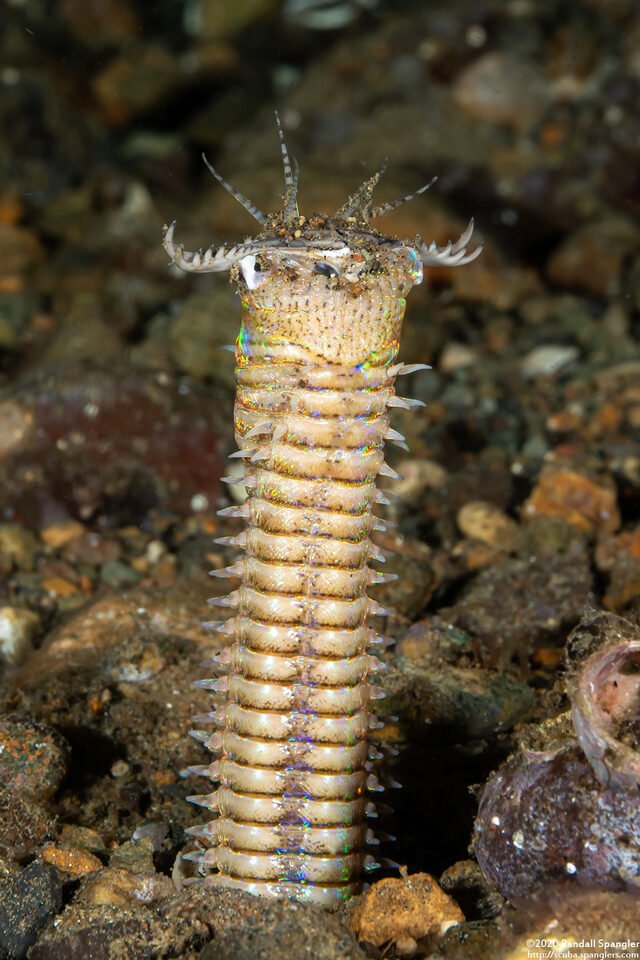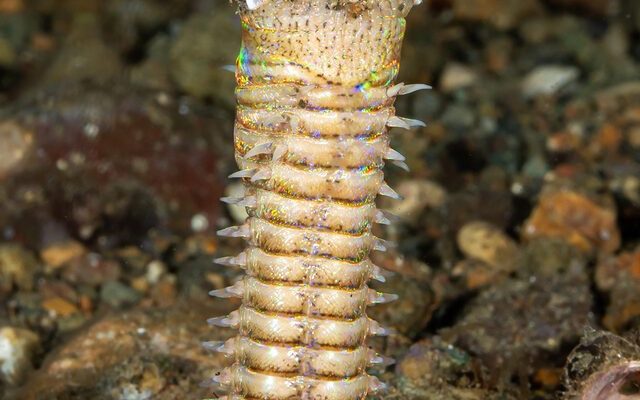
Bobbit worms might sound a bit scary and can spark curiosity—and maybe even a hint of fear—but understanding these fascinating creatures can enhance your underwater experience. Think of them as the hidden predators of the reef: they don’t actively seek out snorkelers, but knowing what they are and how to stay safe can make your snorkel adventure much more enjoyable. So let’s dive in and explore Bobbit worms and reef safety together!
What Exactly is a Bobbit Worm?
Bobbit worms, scientifically known as *Eunice aphroditois*, are marine polychaete worms that can grow up to 10 feet long. Yes, you read that right! They tend to stay hidden, burrowing into sandy or muddy substrates on the ocean floor, which makes spotting them quite rare. Picture them like stealthy ninjas, lying in wait for their next meal. It’s their unique hunting style that makes them stand out: they use their long, segmented bodies to ambush unsuspecting fish and crustaceans that swim too close.
What makes Bobbit worms particularly interesting is their impressive jaws. They can snap at lightning speed, catching prey with remarkable precision. While they can look alarming, especially when you first see one, they really prefer to stay hidden. You might be wondering how to identify these creatures in the wild. They usually display bright shades of green, red, or brown, blending perfectly with their surroundings.
Understanding their behavior can help snorkelers remain safe. Bobbit worms are not aggressive towards humans, but accidentally disturbing their homes could trigger a defensive reaction. It’s important to approach all marine life with respect!
Why Bobbit Worms Matter to the Reef Ecosystem
Bobbit worms play a vital role in keeping coral reefs healthy and balanced. As predators, they help control the population of small fish and crustaceans, which can otherwise overpopulate and disrupt the ecosystem. In many ways, they’re nature’s way of maintaining balance. It’s like having a friendly neighborhood watch that helps ensure everything runs smoothly.
Additionally, Bobbit worms contribute to the reef by aerating the substrate they inhabit. As they move through the sand, they create burrows that allow water to circulate, which is essential for the health of the coral. Just like gardening, where you turn the soil to help plants grow, the activities of these worms encourage a thriving underwater environment.
If you encounter a Bobbit worm while snorkeling, consider it a good omen: you’re witnessing a healthy, functioning reef ecosystem! However, keeping your distance is best, as these worms have strong jaws and can cause painful bites.
Staying Safe While Snorkeling Near Bobbit Worms
Now that we know more about Bobbit worms, let’s talk about how to safely enjoy your snorkeling experience. Here’s the thing—while they usually aren’t a threat, being cautious is always wise when interacting with wildlife. Here are some key safety tips to keep in mind:
- Watch Your Surroundings: Always be aware of where you’re swimming. Avoid diving headfirst into sandy areas where the worms might be hiding.
- Don’t Touch: Respect marine life by not trying to touch or provoke any creature, including Bobbit worms. Remember, they’re part of the reef’s ecosystem.
- Wear Protective Gear: Using a wetsuit or rash guard can protect you from accidental bites or scrapes, should you come into contact with any sharp objects in the reef.
- Snorkel with a Buddy: Having a friend with you can make your snorkeling experience safer and more enjoyable. Plus, it’s nice to share the adventure!
Being informed and prepared can go a long way in ensuring your safety. Enjoy the beauty of the ocean, but also take the necessary precautions to protect yourself and the marine life you encounter.
Understanding Coral Reef Conservation
While snorkeling provides a thrilling way to experience marine life, it’s essential to practice responsible snorkeling. This means being mindful of your impact on the reef. Just like how Bobbit worms help sustain the ecosystem, we can contribute positively, too.
Here are some quick reminders to keep the reef safe during your snorkeling trips:
- Avoid Touching Coral: Coral is delicate and can easily be damaged. Even a light touch can harm these living organisms.
- Don’t Feed Fish: Feeding wildlife can disrupt their natural behaviors and lead to dependency on humans for food.
- Use Reef-Safe Sunscreen: Traditional sunscreens can harm marine life; opt for products labeled “reef-safe” to protect the ocean.
By practicing these tips, you’re not just keeping yourself safe; you’re helping to protect the colorful underwater world for future snorkelers too!
Final Thoughts on Snorkeling and Bobbit Worms
Diving into the underwater world is an exhilarating adventure, filled with creatures like Bobbit worms that remind us of the intricacies of marine ecosystems. While the idea of encountering one might sound a bit intimidating, knowing how to approach these situations is key. Remember, Bobbit worms are part of a larger system that thrives on balance and harmony.
So next time you put on your snorkel gear, keep these creatures in mind. Take a moment to appreciate the beauty and complexity of the reef. With the right knowledge and respect for marine life, your underwater explorations will be safe, enjoyable, and full of wonder. Happy snorkeling!

